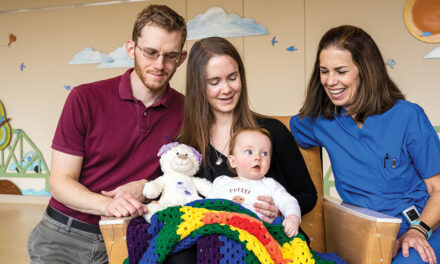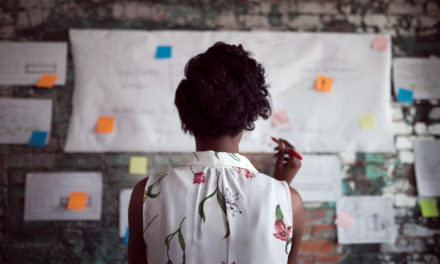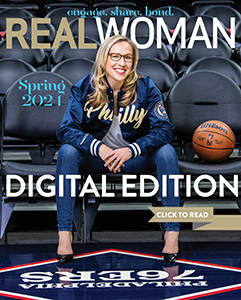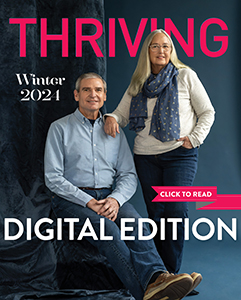About 20 years ago, I was just about to make a big move to Manhattan, so my grandmother gave me some advice on navigating a big city. She told me to just think of the city street-by-street and block-by-block and not get overwhelmed by the magnitude.
What I remember about her advice, besides the practicality of it, was realizing that it had come from a particular need. As a young woman who reached maturity on the brink of World War II, having lost a father at age 16 and whose large family depended on her income, she developed approaches she could call upon when she needed them.
Years later, one of those strategies was to drive around the block so she never had to make a left turn in oncoming traffic. We all laughed at that, but while many of her peers had stopped driving, she had found a strategy that helped her maintain her independence.
When I think about what I inherited from my maternal grandmother and my mom, I often think about the genetic links: my red hair and blue eyes and 5’4″ stature. But when it comes to the application of using what I’ve been given in body and mind, it is through their actions, not genes, that they gave me the trait of being nimble-minded.
In my work with an education technology company now, I see these approaches as real-world learning strategies, often used by educators to help children cope with cognitive and academic challenges. My guess is that women and mothers create these adaptive strategies instinctively to manage the challenges of, quite literally, doing it all.
My mother, who is a very creative person, is also easily distracted. She re-entered the workforce when I was in elementary school, and she needed a way to keep track of multiple schedules. She turned to the tactic of writing notes to herself in the one place every mother goes: the bathroom mirror. Sticky-notes hit the market in the 1980s, and today you may set reminders on your smartphone, but writing with a bar of soap on the mirror is still my mother’s preferred strategy of keeping her to-do list straight.
Perhaps the greatest strategy my mother taught me was one that is harder to define. She gave me the freedom to be creative, which no doubt led to my becoming a better student and more curious learner, despite the fact that some of this freedom was not the “textbook” procedure for success.
I know now that listening to the entire double-disc CD of Les Mis while doing my algebra falls into the category of “multi-tasking” which is a no-no, especially for those of us who already needed a lot of time to complete their math homework.
But this was the same mother who let me create a research project on the study of dreams that included a song by the Everly Brothers.
I followed the creative impetus in my work and still do. I adapted, both to my interests and my strengths, to meet fears and limitations with a workable approach. So many women and mothers do this, efficiently making dinners on Sunday night to freeze for later in the week or taping multiplication tables on the back seat so a child can study while being driven to swim practice. We must adapt and shift,and figure out ways to cope with the inexhaustible and shifting demands tossed our way.
It’s the trait of being nimble that I think many of us learn, if not inherit, from our mothers and grandmothers. And it’s one I only appreciate more fully, now that I depend on it as a mother, too.









